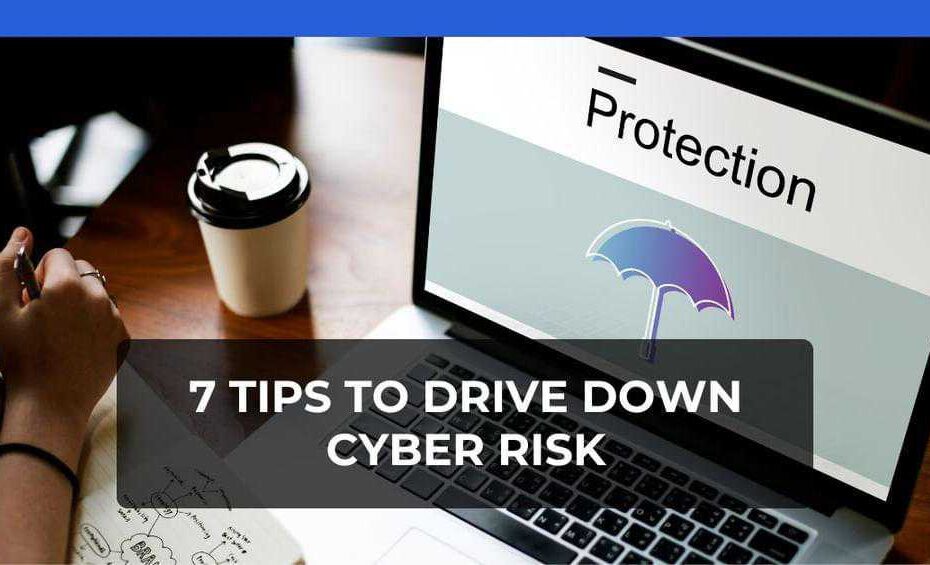In today’s digital age, cyber threats are a growing concern for individuals and businesses alike. As technology continues to change, so do the methods of cyber risks or say cyber criminals meaning that you have to remain alert and take proactive steps in order to safeguard your digital property.
Regardless of whether you are an individual user or a big organization, reducing your cyber risk must be among the things you should prioritize. In this blog post we will explore 7 best practices that will help you fortify your defenses and avoid being taken advantage of by cyber criminals.
-
Use Strong Passwords
The first step to undertake in regards to cybersecurity is creating strong passwords for all your accounts and devices. Avoid using easy-to-guess passwords such as common words or personal information. Instead make use of long, intricate combinations of letters, numbers and special characters whenever possible. Highly recommending, always change the password every six months. Additionally, always use multi-factor authentication where applicable which adds another layer of protection.
-
Keep Software Up-To-Date
Hackers often target out-of-date software as well as operating systems because they usually contain vulnerabilities that can be exploited. To counter this, make it a point to constantly update all software applications, including critical business systems like Enterprise Resource Planning (ERP) software and accounting software. These updates often include security patches and bug fixes that address known weaknesses. This simple act of keeping your software up-to-date can go a long way in closing potential entry points for cyber threats and protecting your valuable data.
-
Make Network Security Better
It is necessary to make your network safe and secure by putting in place strong firewalls, Endpoint Protection Software (EPS), and intrusion detection systems. These tools can help detect and block unauthorized access attempts, malware, and other forms of malicious activities, including ransomware attacks. Ransomware encrypts critical data, rendering it inaccessible until a ransom is paid. Endpoint detection and response (EDR) can be another valuable layer of defense against ransomware. EDR goes beyond traditional antivirus by continuously monitoring endpoint activity for suspicious behavior that might indicate a ransomware attack in progress. Furthermore, it is important to consider having a segmented network which will isolate sensitive data thus limiting the potential damage that may arise if there is any breach. A segmented network creates zones that restrict access to specific parts of the network, making it more difficult for attackers to move laterally and access sensitive data even if they breach the perimeter.
-
Train Employees on Cyber Hygiene
Most cyber incidents occur due to human error. Regularly invest in cyber security awareness training for employees where they are educated on various best practices such as how to identify phishing attempts, handling sensitive data securely, sticking to company policies among others. A well-informed and alert workforce can serve as your first line of defense against these threats.
Phishing attacks are a common tactic where attackers try to trick employees into clicking malicious links or opening attachments that can steal data or deploy malware. Training should equip employees to recognize these attempts by highlighting red flags like suspicious sender emails, urgent call to action, generic greetings, grammatical errors and poor formatting and unfamiliar links or attachments.
-
Develop Data Backup and Recovery Strategies
Nevertheless, despite all efforts put in place towards minimizing cyber incidents there still exist chances that such events can take place anyway. In order to reduce the effect of such happenings it would be essential for you to follow effective data backup strategies as well as recovery plans. Frequent back up of important documents coupled with systems’ restore capabilities that are faster would go a long way in reducing instances whereby significant time is lost or huge volumes of data get destroyed whenever a successful cyber-attack or system collapse occurs.
-
Regularly assess hazards
Any dynamically revolving cyber hazard transcends the concept of stability. By regularly assessing risks, you can reveal any weak spots and loopholes. That may exist in your organization’s cyber protection mechanisms. This way you are a step ahead of impending threats to be able to adjust your security accordingly.
-
Associate with Cyber Security Professionals
The arena of cyber security is a complex one which is always changing. Therefore, source for highly regarded experts in this field, who can render professional advice, advanced threat detection and response services as well as on-going support to you. Their knowledge will complement those from within your organization while ensuring the latest technology and methodologies concerning cyber risk management are at your disposal.
Implementing these seven tips can significantly enhance your cyber resilience and reduce the likelihood of falling victim to cyber attacks. Always remember that cybersecurity is an ongoing process requiring attention, flexibility and proactive measures . Prioritizing on dealing with cyber risks provides an opportunity for protecting digital properties, ensuring privacy preservation as well as securing operations continuity in our increasingly interconnected world.
Boost Your Cyber Resilience with USATinc’s Industry-Leading Solutions
If you are looking for advanced cyber security solutions in order to stay ahead of evolving cyber threats, you should consider USATinc.

